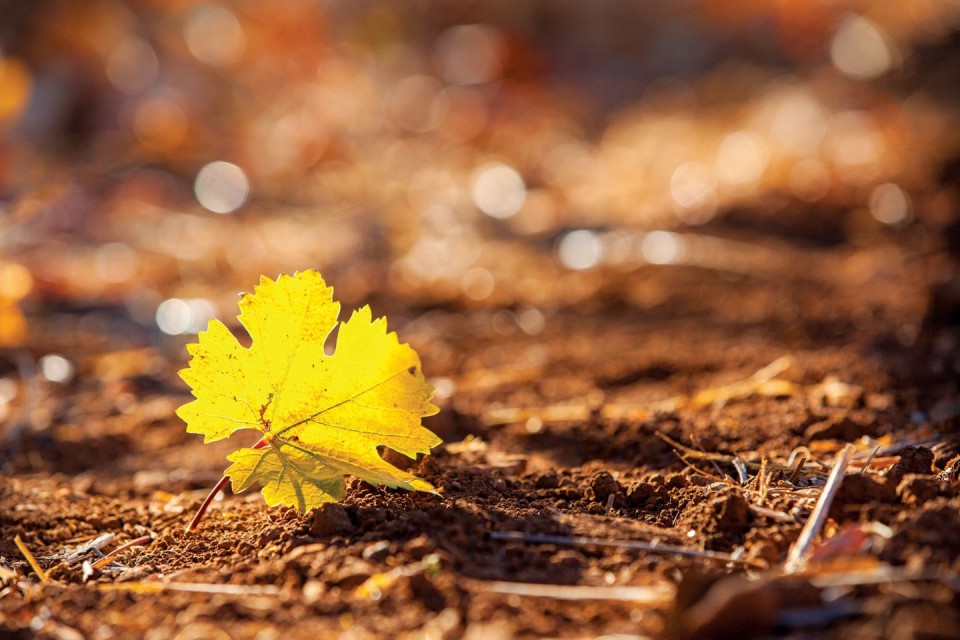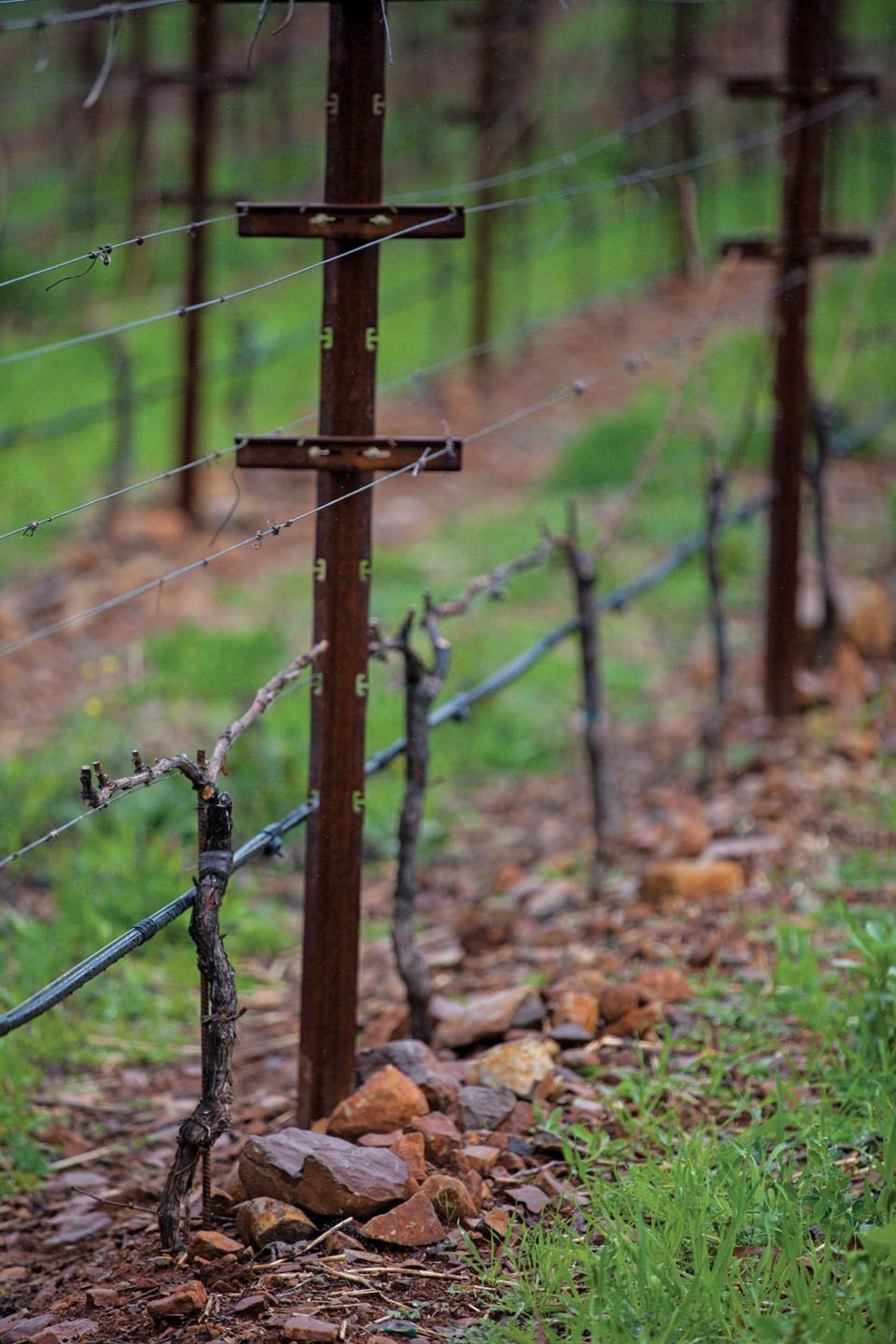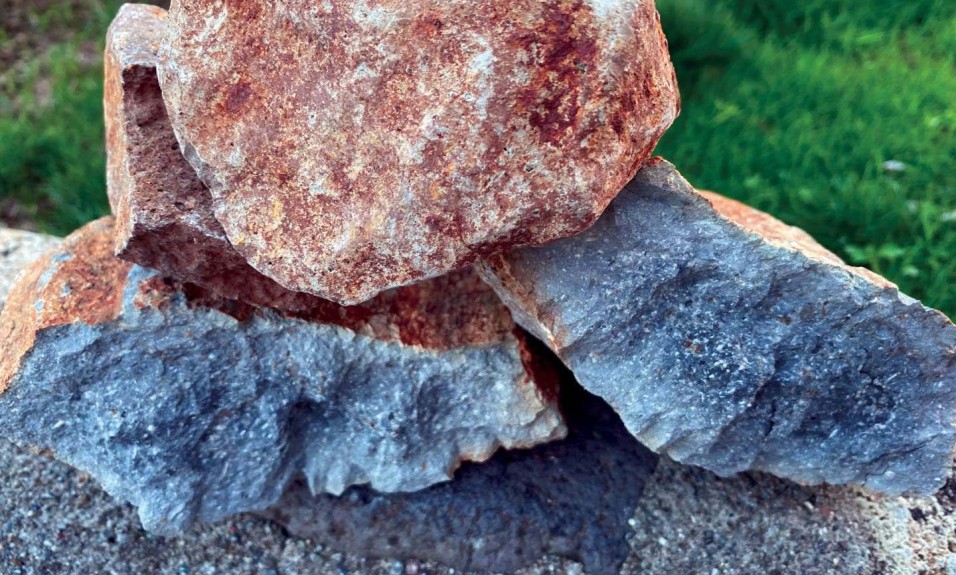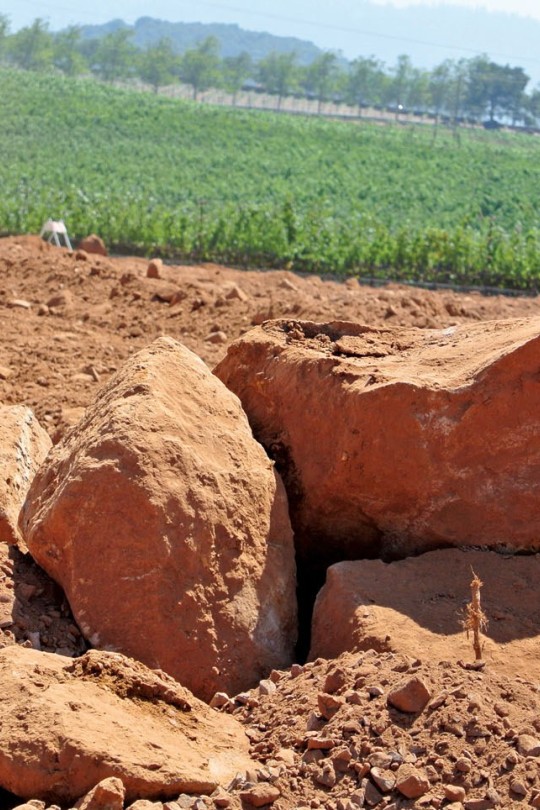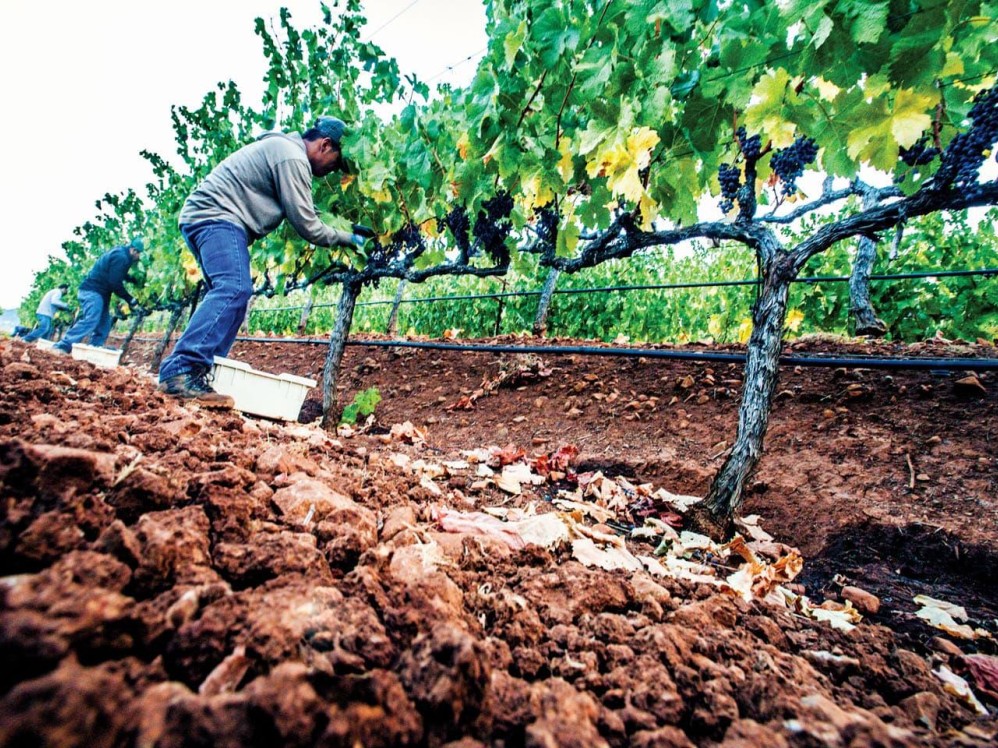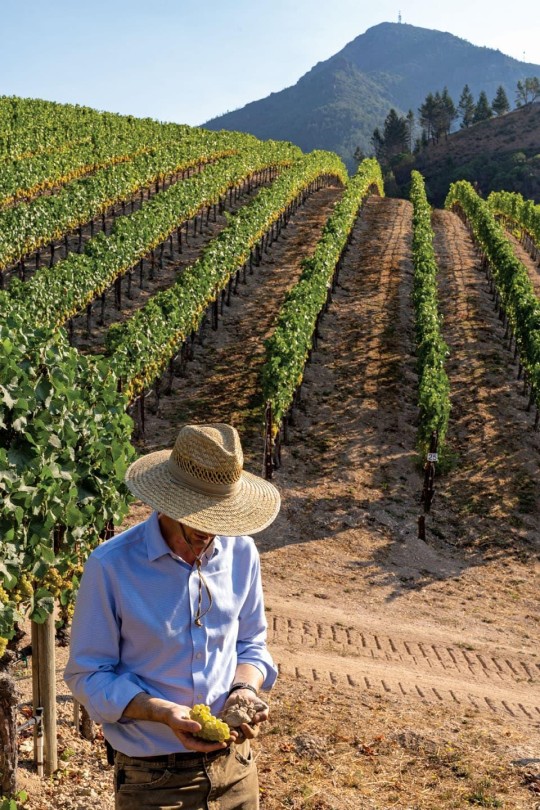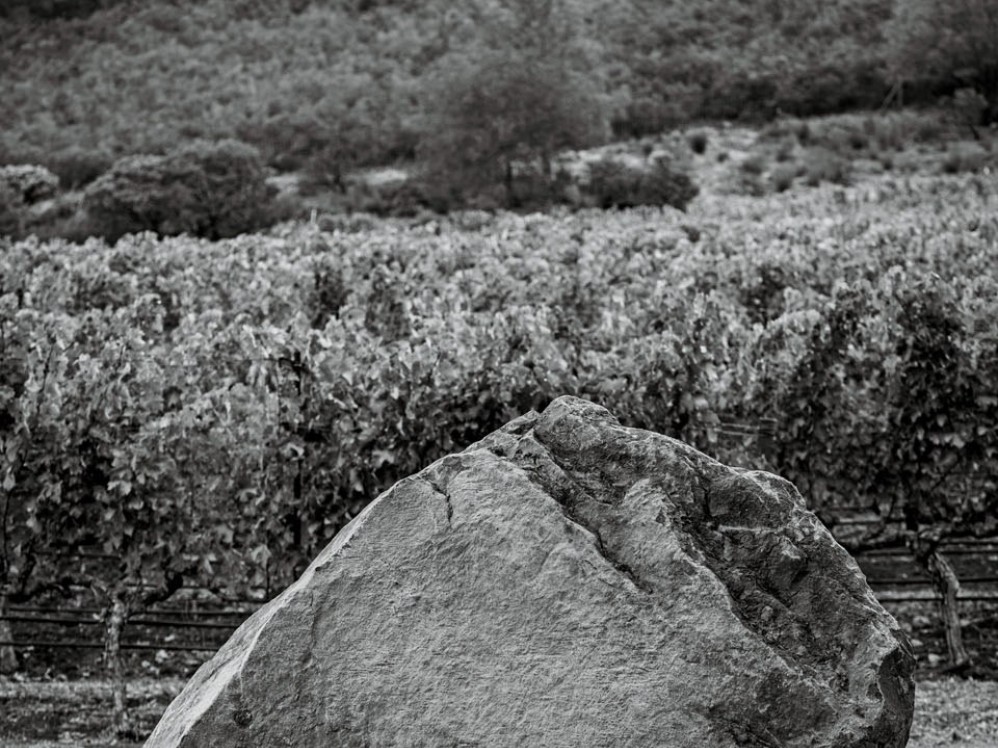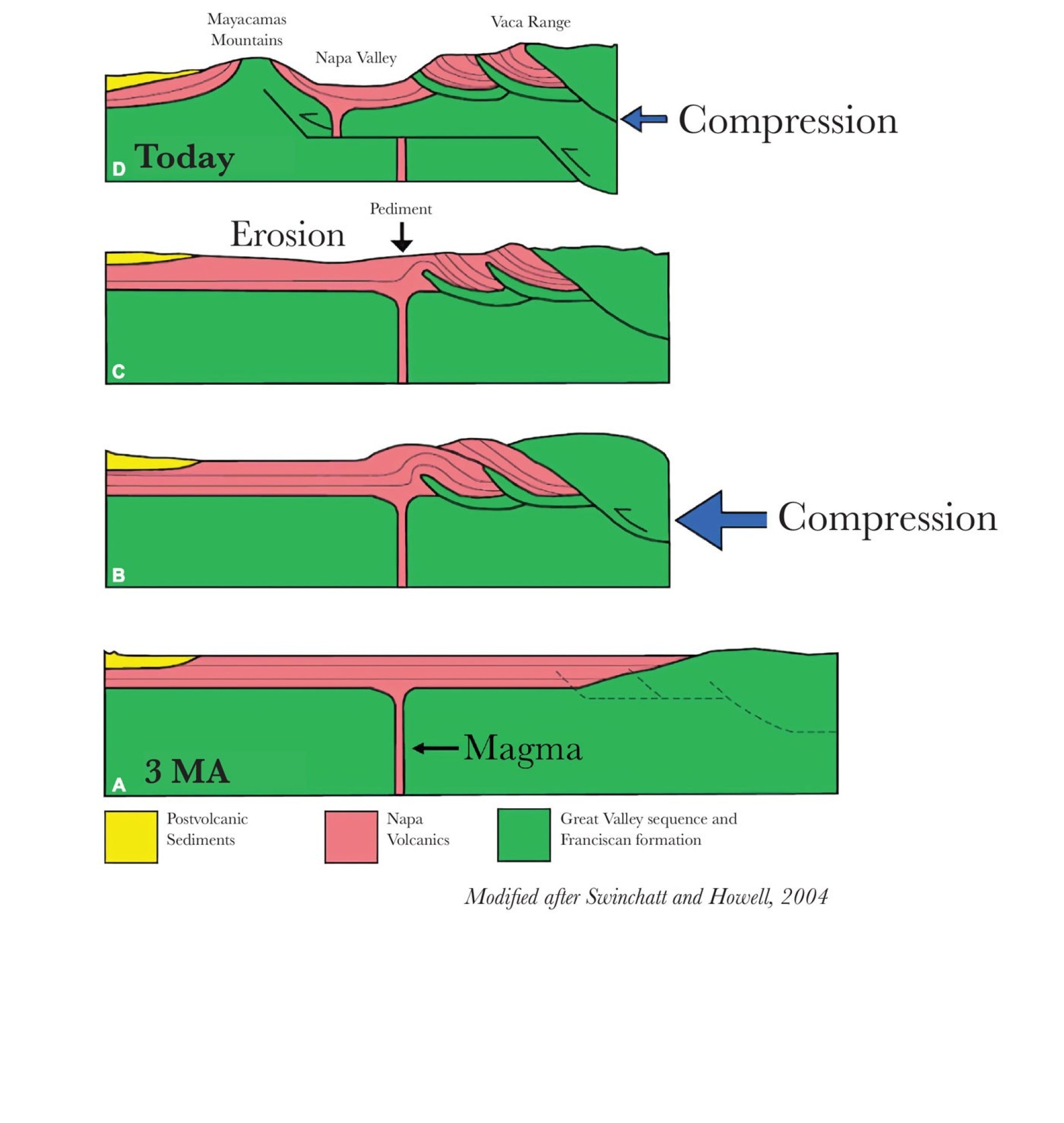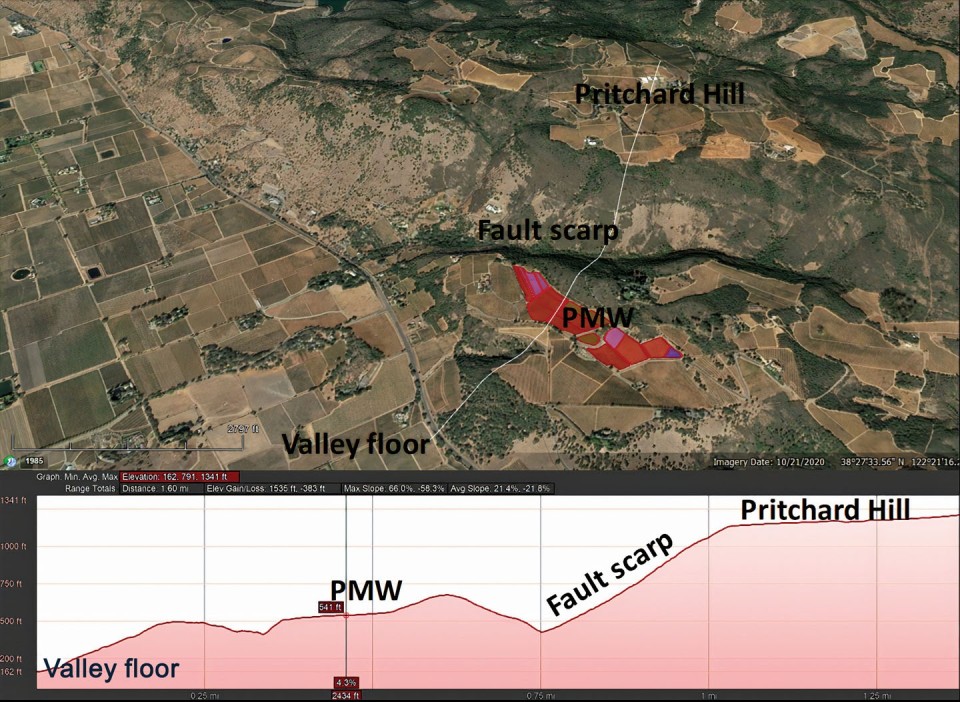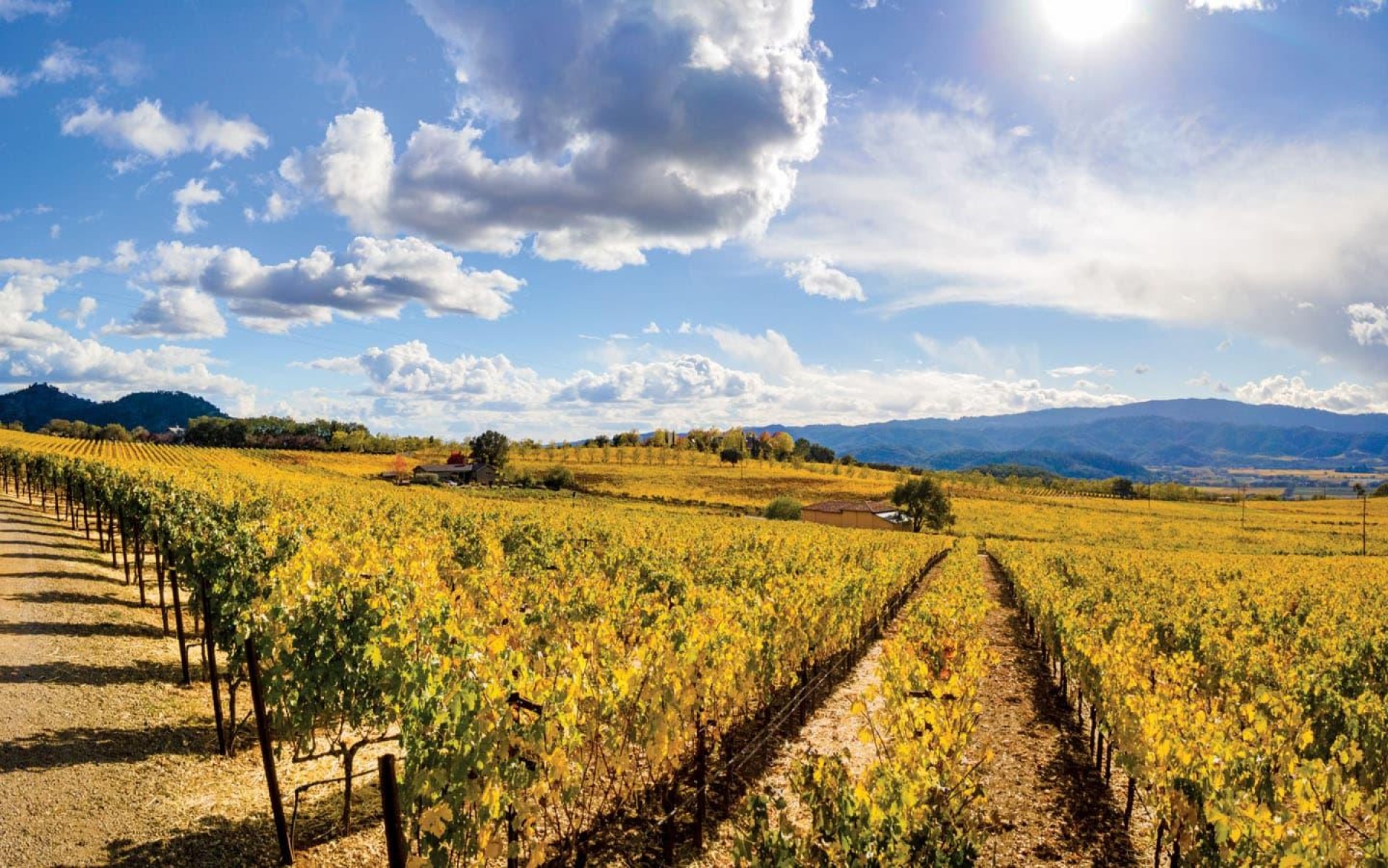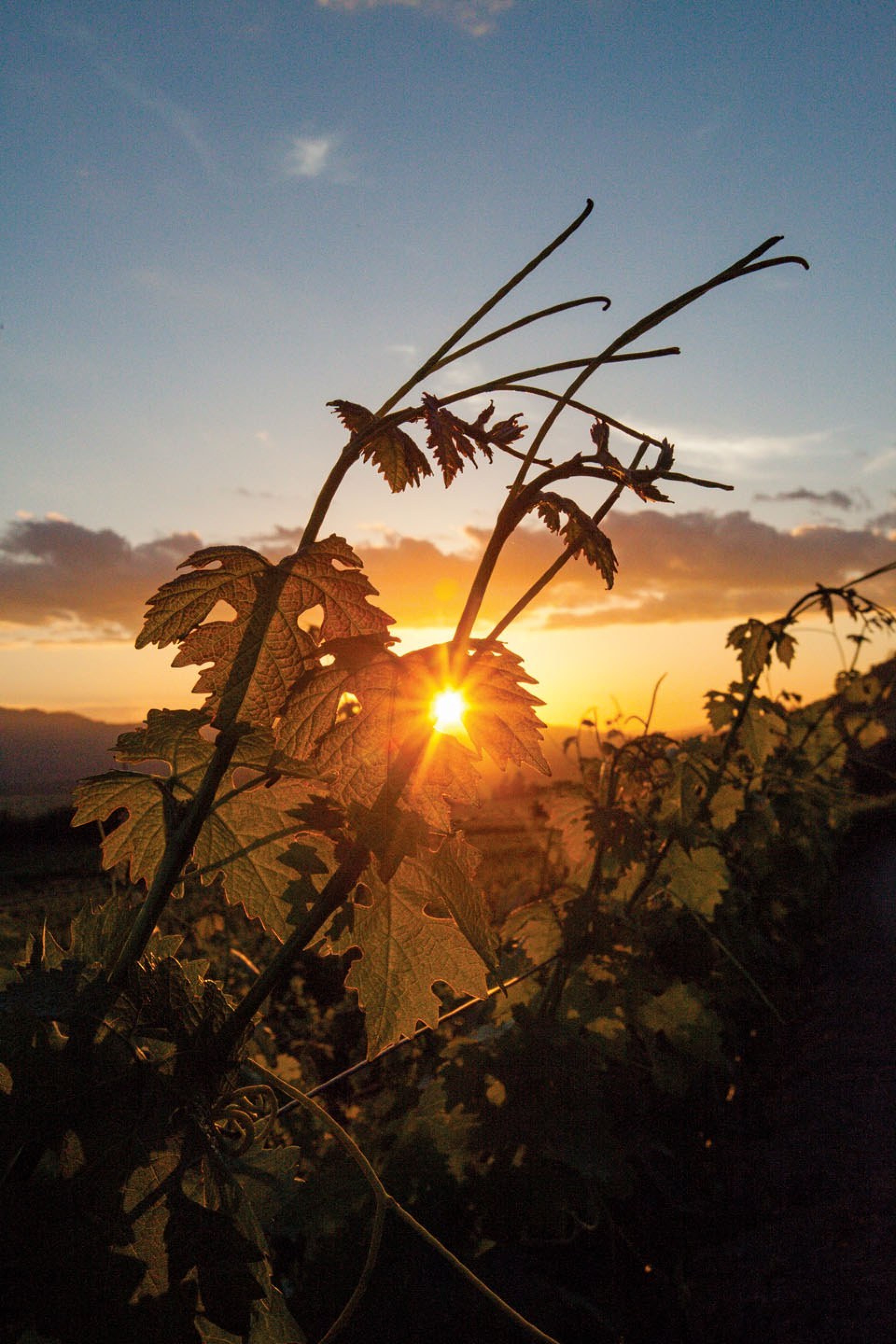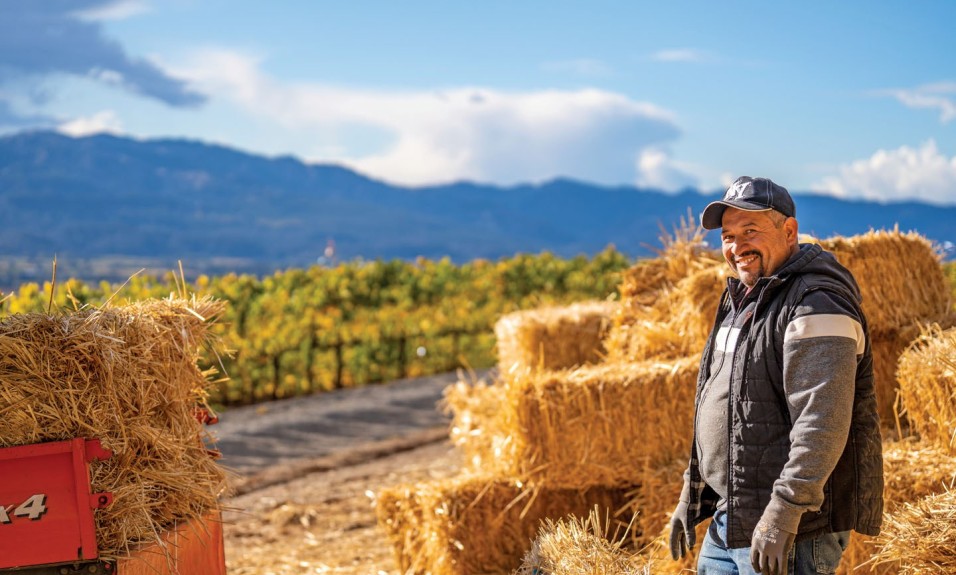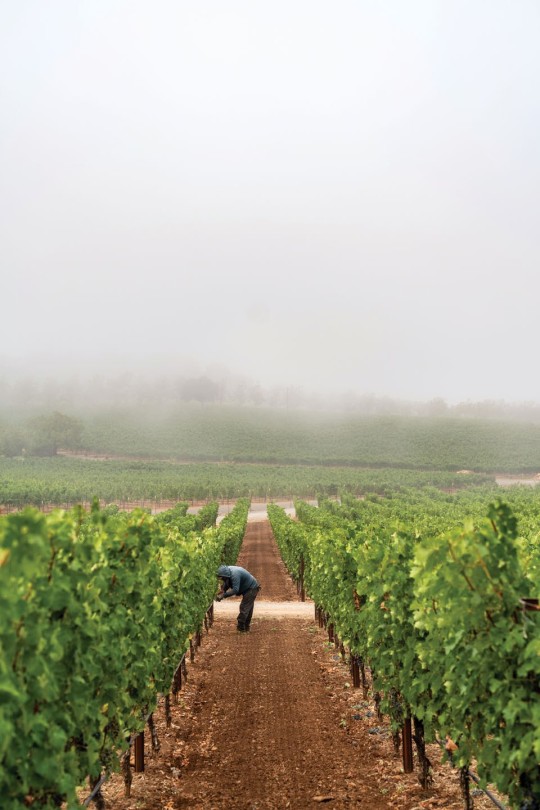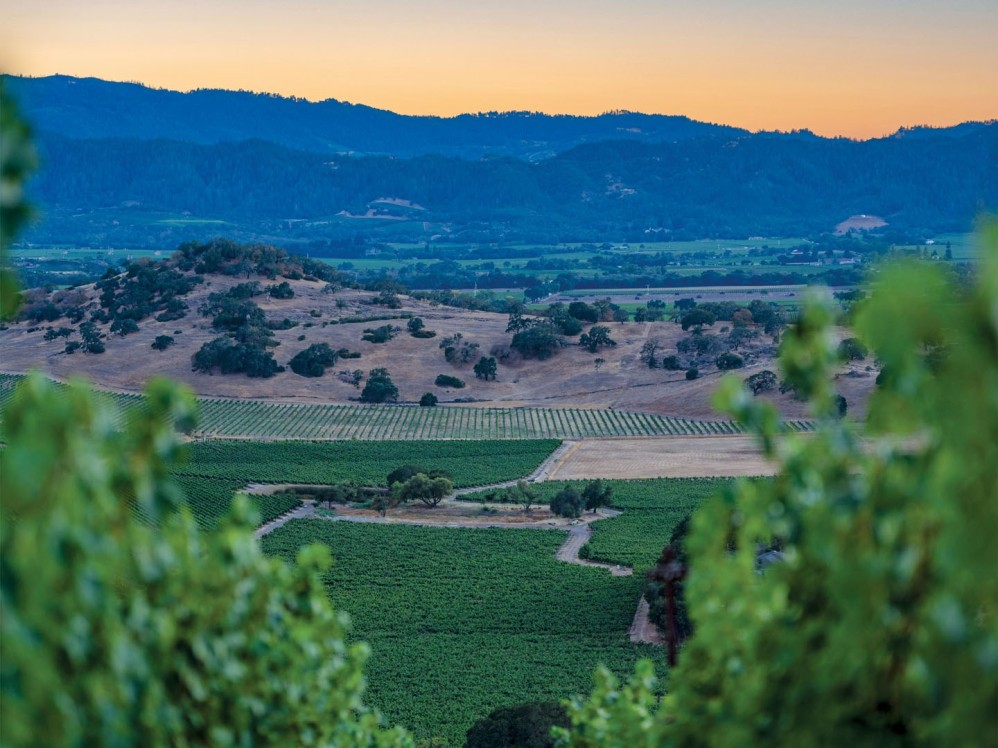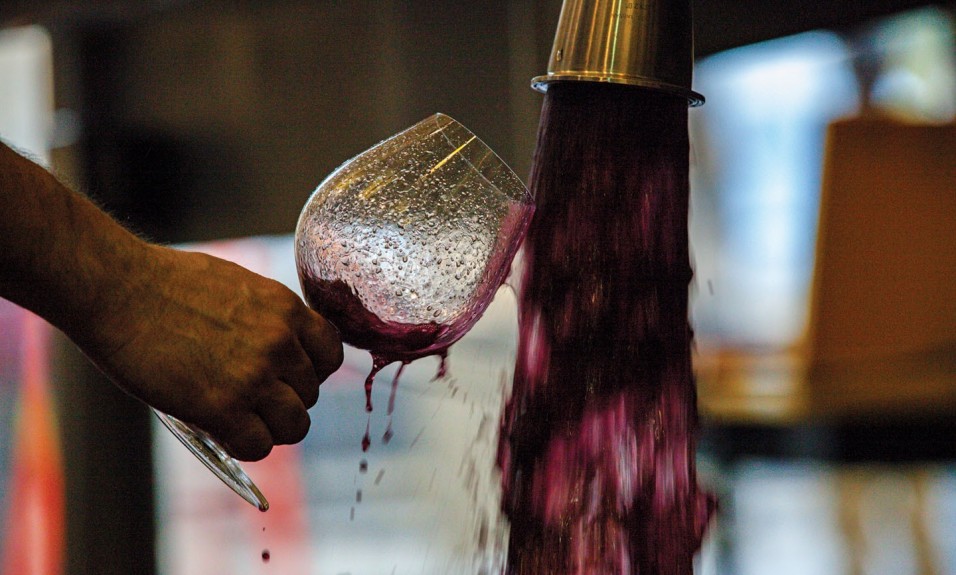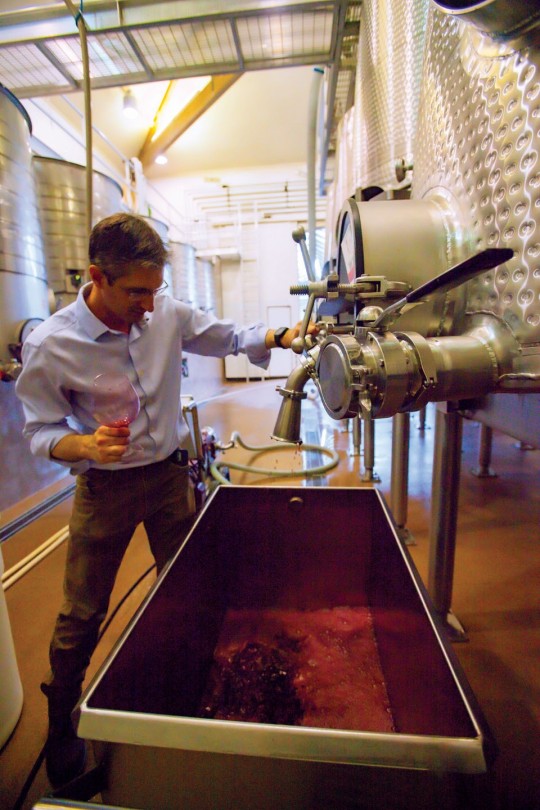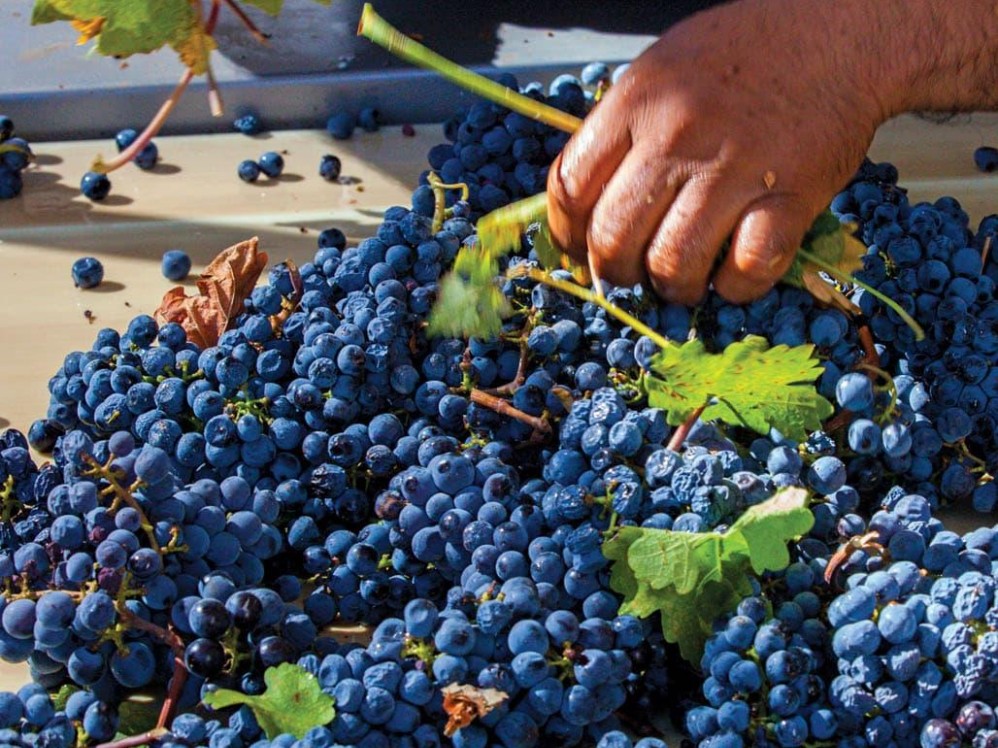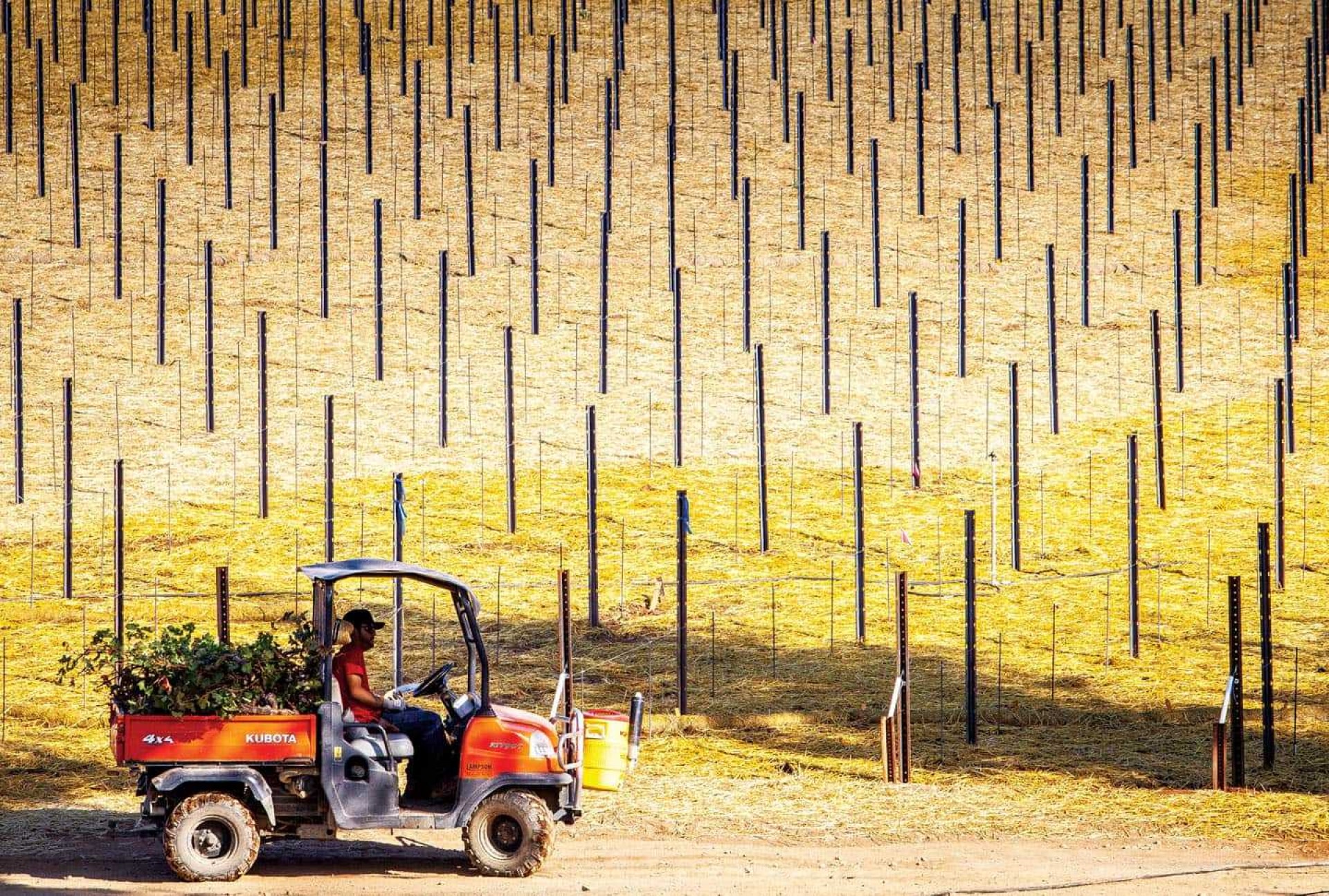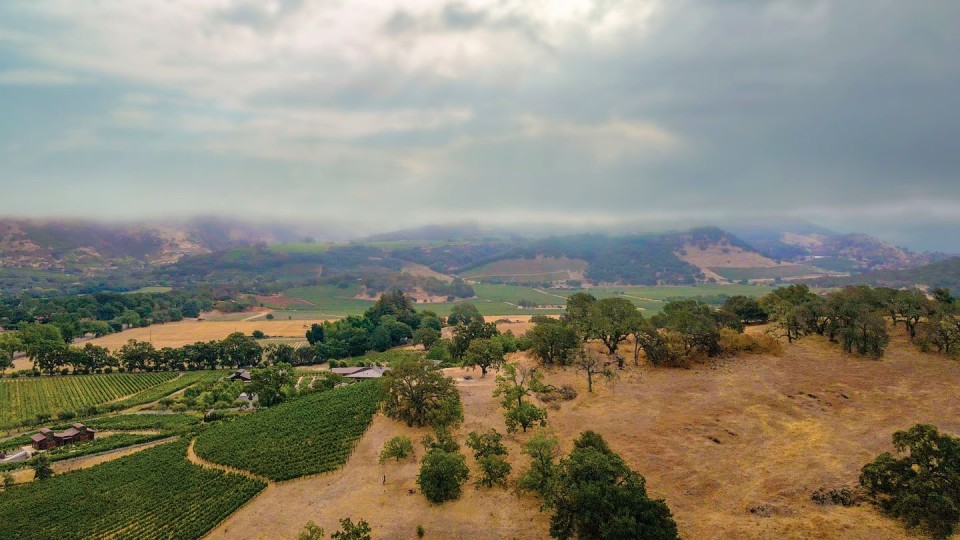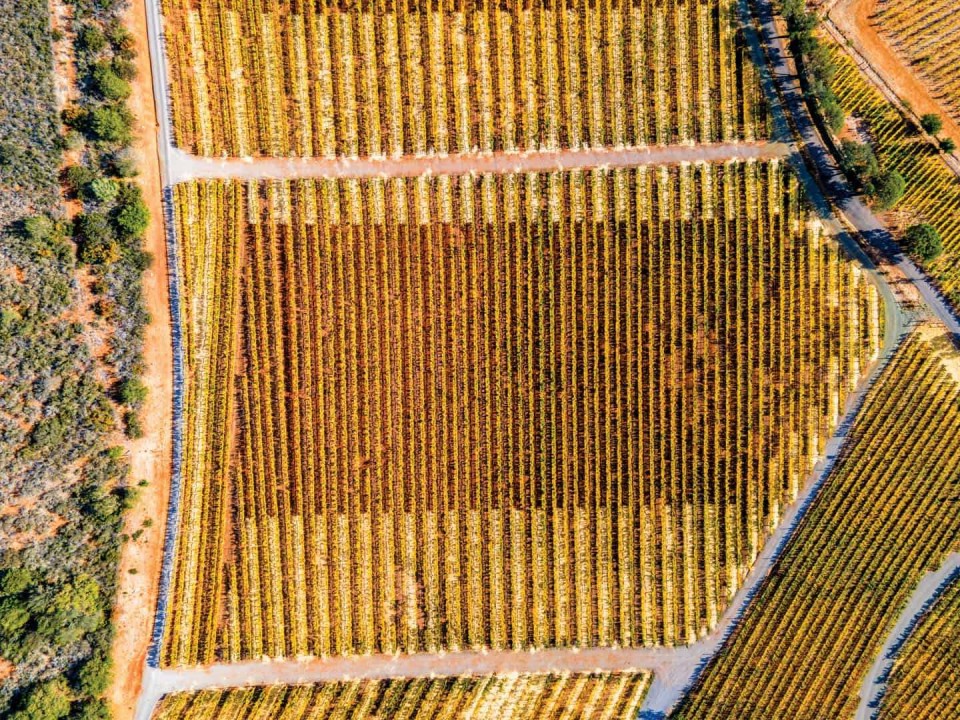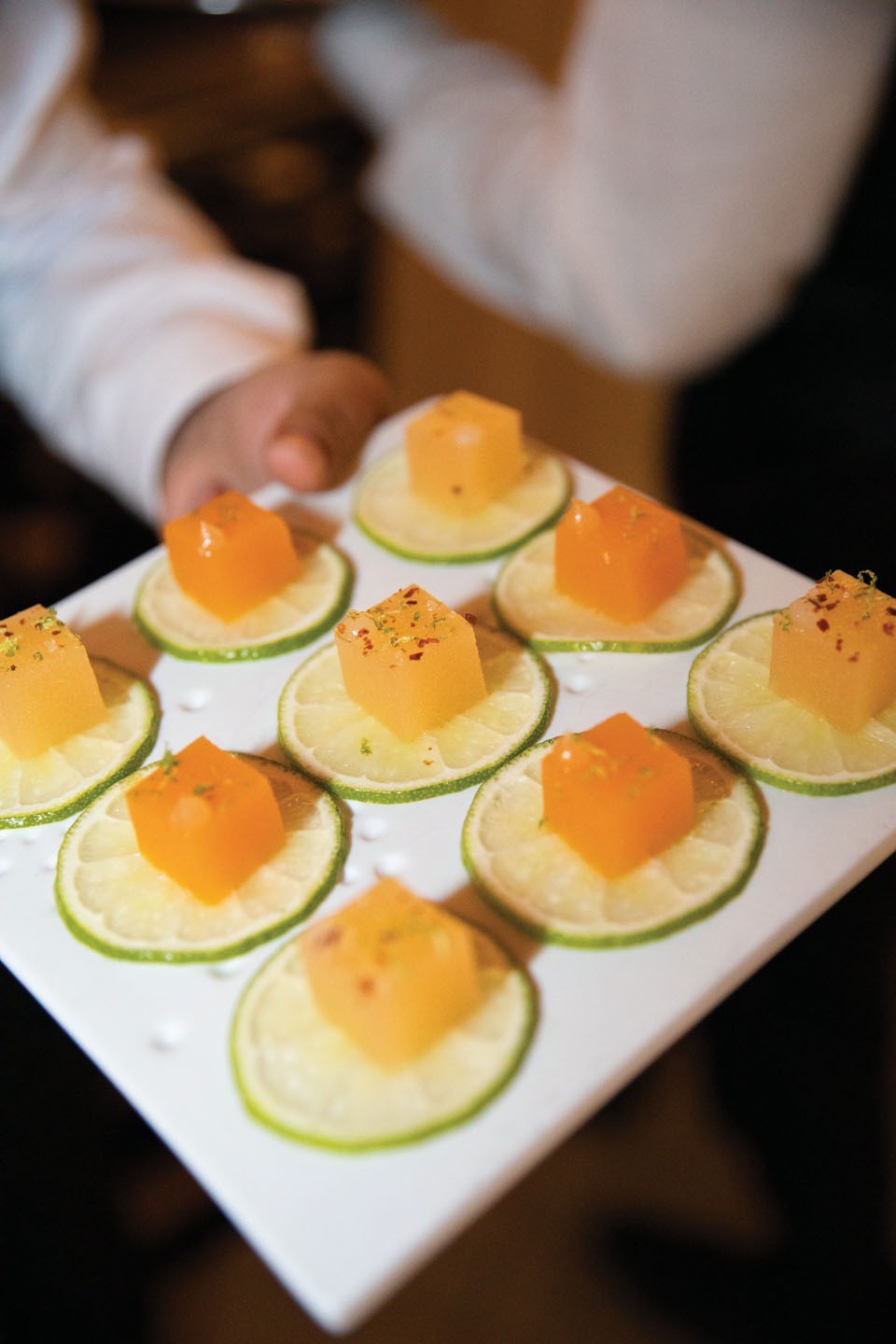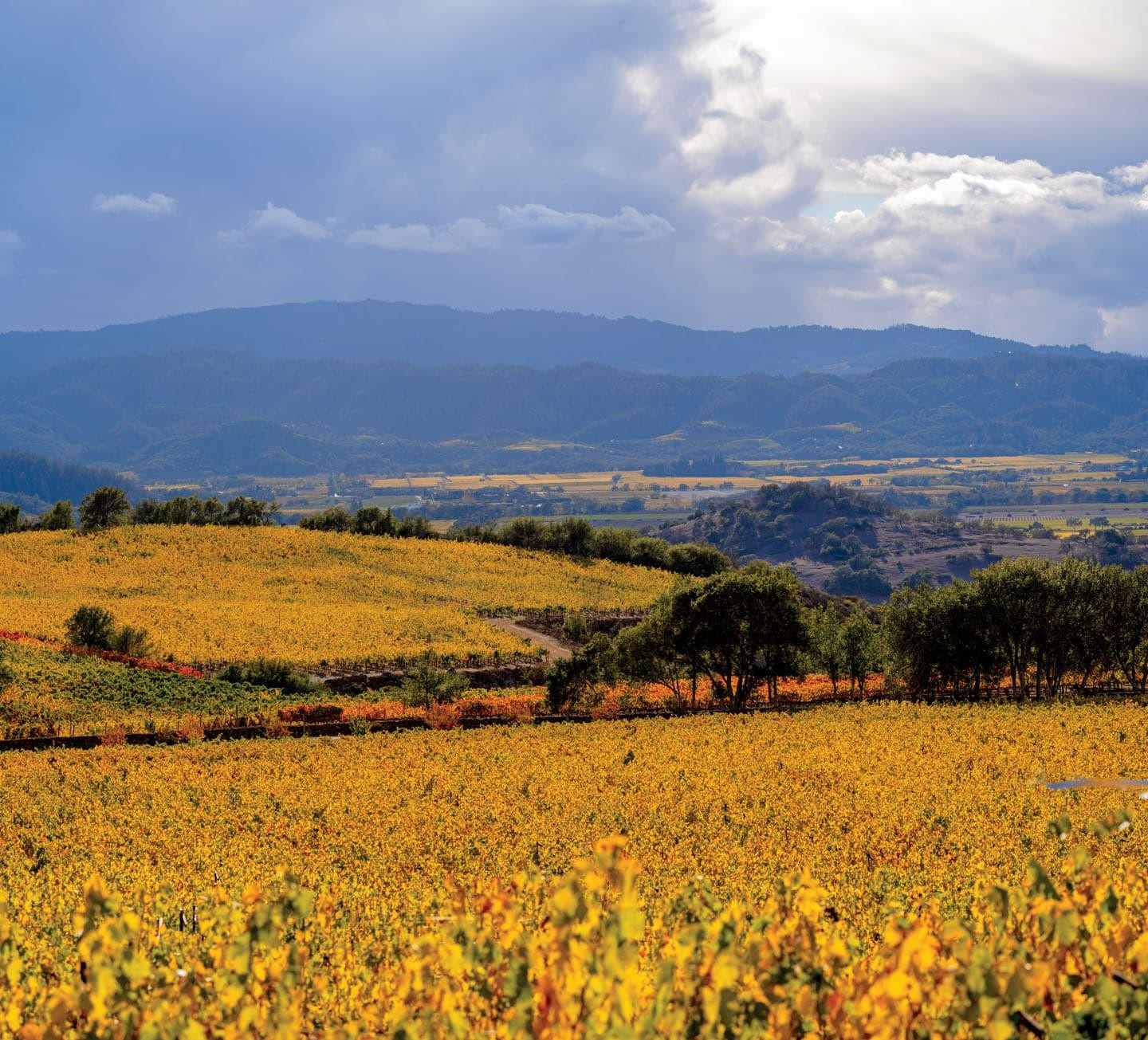By Robert Fiore, Winemaker
La terre rouge: “red dirt.” Four crystal vessels tastefully hanging on the wall greet the visitor entering the Calvin Holmes Suite at our Knights Valley Estate: one stands out for its rich crimson hue, distinctly different from the other three vessels containing soils and rocks from our Seaview Estate, and from Les Pavots Vineyard and Belle Côte Vineyard in Knights Valley.
The soils from our Oakville Estate are unmistakable. When I walk through each vineyard block tasting berries before harvest, the soft red soil compresses gently under my boots, displaying the hallmark of well-drained, healthy, structured soil. Under the steady guidance of our vineyard manager, Javier Aviña, and Oakville foreman Mario Garcia, the vineyard is impeccably cared for, and the resulting fruit is stunning. Some vines date back to the early 1980s and 1990s. ‘Au Paradis’ Cabernet Sauvignon exhibits high-quality, fine-grained tannins with grace and power, and it all begins with this special terroir. While ‘Le Chapeau Blanc’ Cabernet Franc comes from a single old-vine, 2-acre (0.8-hectare) block at the northern end of the property, it similarly produces wines of extraordinary depth and substance.
